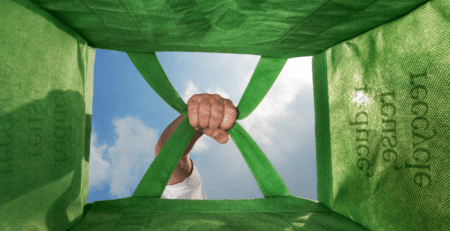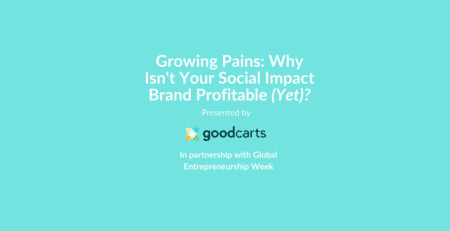Sustainable retail statistics – in homage to Harper’s Index!
Values Driven Consumerism In Numbers
Consumers willing to change their shopping habits to reduce environmental impact: 57%
(Source)
Consumers who think companies should only earn a profit if they also deliver a positive impact : 83%
(Source)
Number of values-driven firms reporting double-digit annual growth: 37%
(Source)
Consumers who will conduct further research on an issue when prompted by a brand: 61%
(Source)
Businesses who expect their sales to grow next year thanks to a focus on sustainability: 86%
(Source)
Consumers who say that traceability is very important to them, and are willing to pay a premium for brands that provide it: 71%
(Source)
Consumers who prefer to buy from brands that align with their values: 71%
(Source)
Increase in searches for “sustainability” in 2020: 37%
(Source)
Consumers defined as “purpose-driven”: 40%
(Source)
Gen Z consumers who believe that companies have a responsibility to address environmental and social issue: 90%
(Source)
Sustainable Products : By The Numbers
$ Share of the consumer packaged goods (CPG) market growth enjoyed by sustainably-marketed products : 54.7%
(Source)
Sales growth for CPG coming from sustainability-marketed products : 50%
(Source)
Annual increase in B Corp certifications : 40%
(Source)
Increase in growth experienced by sustainable-marketed products vs non-sustainable equivalents : 7x.
(Source)
Sales from products that had a sustainability claim on-pack : $114 billion
(Source)
Amount of Unilever’s turnover growth delivered by its “sustainable living” brands : 70%
(Source)
Sales projected for the US sustainability market in 2021 : $150 billion
(Source)
Internet users worldwide who’ve ditched products and services from a brand that violated their personal values : 47%
(Source)
Consumers who consider the use of sustainable materials to be an important purchasing factor when assessing products : 67%
(Source)
Sustainable Fashion In Numbers
Microplastics in the marine environment that can be sourced back to synthetic clothing : 20-35%
(Source)
Fashion chains that have pledged to adopt more sustainable practices : 12.5%
(Source)
Amount of clothing recycled into new apparel : 1%
(Source)
Expected size of the sustainable fashion industry by 2023 : $8.25 billion
(Source)
Number of Depop users, reselling and rewearing pre-loved fashion : 21 million
(Source)
Annual increase in Google searches for “sustainable fashion” : 130%
(Source)
Amount of the world’s carbon budget that the fashion industry will be responsible for by 2050, if no action is taken : 25%
(Source)
Brands joining Emmanuel Macron’s “Fashion Pact” to Make the Fashion Industry More Sustainable : 150
(Source)
Hourly wage paid to garment workers in Leicester UK : £3
(Source)
Annual year over year increase in searches for “sustainable swimwear” : 65%
(Source)
Ethical Beauty In Numbers
Growth of certified organic and natural beauty products in the past year : 23%
(Source)
Consecutive years of double-digit growth in the organic health and beauty sector : 9
(Source)
Consumers choosing organic beauty because it is more sustainable : 41%
(Source)
Expected value of natural cosmetics and personal care industry by 2027 : $54.5 billion
(Source)
Reduction in water consumption per finished product By L’Oréal : 60%
(Source)
Expected compound annual growth rate (CAGR) of the global organic skincare products’ market in the forecast period 2020-2025 : 8.5%
(Source)
Consumers would like their preferred skincare brands to be eco-friendly : 25%
(Source)
Consumers now looking for products with recyclable packaging : 69%
(Source)
Sobering Statistics
Consumers concerned about increased waste due to Covid-19 : 43%
(Source)
Average CO2 emissions every time someone loads a web page : 6 grams
(Source)
Number of plastic bags that end up in landfill every minute : 1 million
(Source)
Annual amount of clothing and textiles thrown away by the average American : 80 lbs
(Source)
Expected increase in urban last mile delivery emissions from ecommerce by 2030 : 30%
(Source)
Trees pulped every year to produce shipping cartons, cardboard mailers, void-fill wrappers and other paper-based packaging : 3 billion
(Source)
Estimated amount of Amazon’s plastic packaging that ends up in the world’s freshwater and marine ecosystems as pollution annually : 22.44 million lbs.
(Source)
Crunching The Numbers…
These retail statistics represent a real rollercoaster. On one hand, certain aspects of our industry still feel incredibly disheartening. On the other, the demand for and awareness of sustainable, ethical retail is undeniable.
Retailers have a duty to give people the opportunity to shop in a way that reflects and supports their values. GoodCarts is ready to do its part by helping more people discover the brands that are out there making a real difference.
Be part of the seachange and let’s continue to see the numbers shift in a more positive direction!
P.S. Did we miss any insightful sustainable retail statistics from the last year or two? Please send them in! And subscribe to our Impact Retail e-newsletter where we share articles with numbers most days.
They say the numbers never lie… In a homage to the iconic Harper’s Index, we’ve pulled together some eye-opening statistics that reflect the current state of the retail industry. While it doesn’t all make for pretty reading, there’s plenty to keep us hopeful. GoodCarts is proud to be playing our part in supporting the brands out there fighting the good fight.











